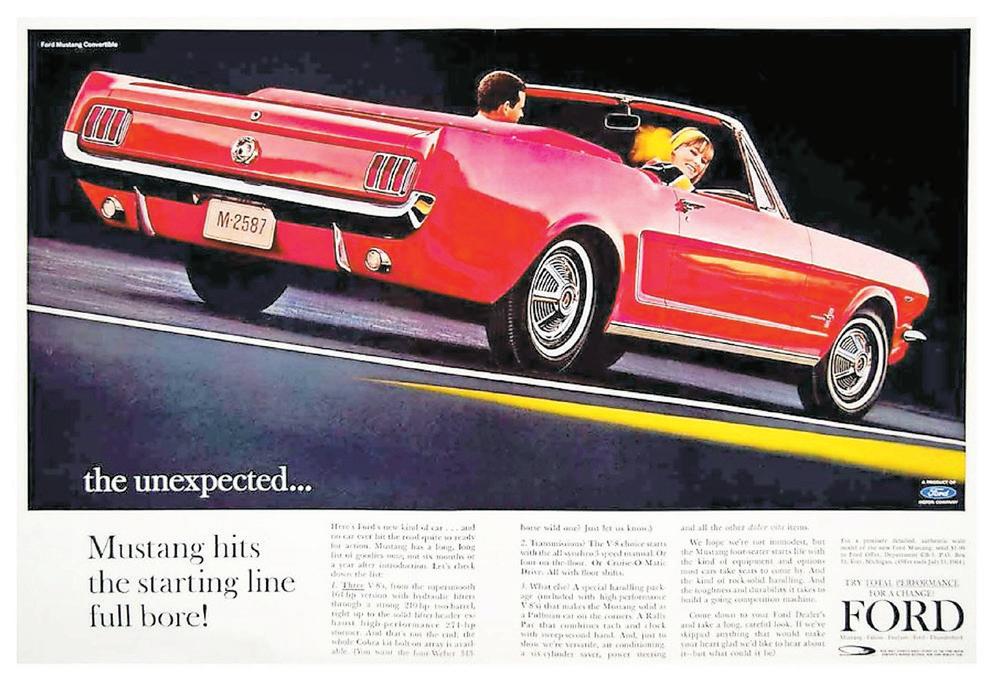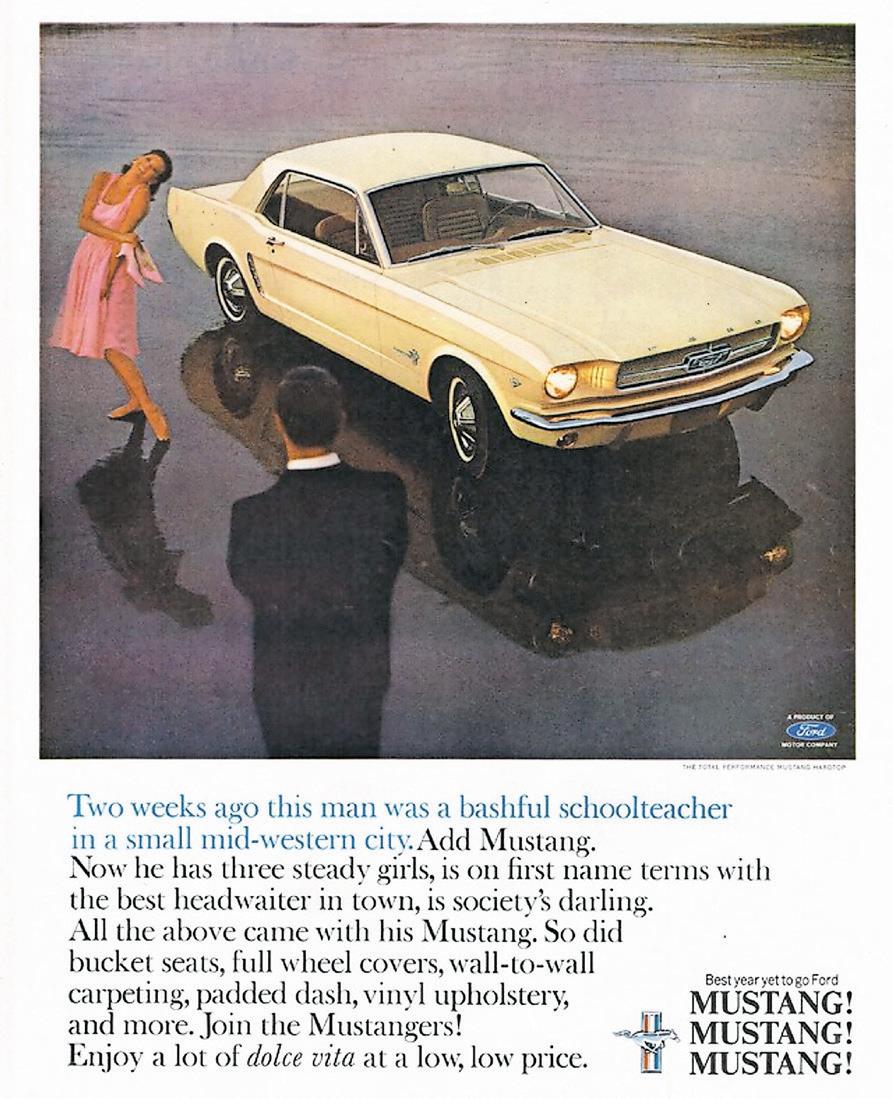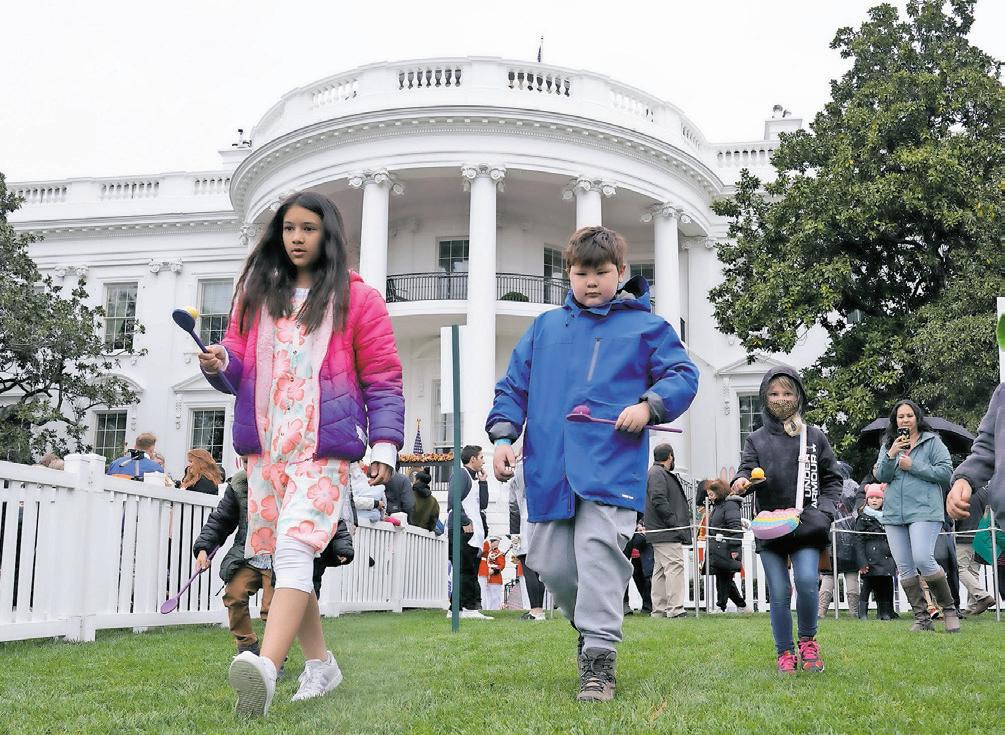
20 minute read
CongReSS SeekS to booSt ComPuteR- ChiP induStRy
Congress seeks compromise to boost computer chip industry
Advertisement
Kevin Freking - The Associated Press
Aglobal computer chip shortage has made it harder for consumers to get their hands on cars, computers and other modern-day necessities, so Congress is looking to boost chip manufacturing and research in the United States with billions of dollars from the federal government.
Both the House and Senate have passed major legislation on the matter and the effort is one of lawmakers’ final opportunities before the November election to show voters they are addressing the nation’s strained supply chains.
Now they have to work out considerable differences in the two bills. And Senate Republicans are already digging in before the negotiations formally begin.
President Joe Biden has made the semiconductor legislation a top priority, but he’ll need the support of 10 Senate Republicans, and perhaps more, to get a bill to his desk. Senate Republican leader Mitch McConnell emphasized that point when congressional leaders recently announced which lawmakers will serve on the committee that works to reconcile the two bills.
“Without major concessions and changes from House Democrats, this legislation has no chance of becoming law,” McConnell said.
House Democrats say their voices need to be heard during negotiations.
“We need to make sure that everyone has input,” said Rep. Suzan DelBene, D-Wash., chair of the New Democratic Coalition, a group that has 19 members participating in negotiations. “We have a strong bill in the House, and I think there’s important components there that the Senate should also consider.”
Where Things Stand
House and Senate leaders have selected lawmakers to join a committee tasked with merging the two bills into one.
House Speaker Nancy Pelosi chose 49 Democrats and one Republican, Rep. Adam Kinzinger of Illinois, the only GOP member to vote for the House bill. Republican House leader Kevin McCarthy selected 31 Republicans for the committee.
McConnell and Democratic Senate leader Chuck Schumer each picked 13 senators.
The House has approved its participants, while the Senate still has some procedural work to do before it can do that.
The Senate bill is projected to increase spending by about $250 billion over 10 years. The House bill would boost spending by more than $400 billion over the period.
Where There IS Much Agreement
The Senate and House bills allot more than $52 billion for semiconductor production and research. Grants and loans from the federal government would subsidize some of the cost of building or renovating semiconductor plants.
“The chips funding is absolutely the foundation of this bill — it’s a bipartisan foundation,” said Josh Teitelbaum, senior counsel at Akin Gump, a law and lobbying firm. “I think it is what is driving this toward the finish line.”
Josh Teitelbaum Senior counsel at Akin Gump
Some Overlap, But Key Differences
Both bills authorize a big boost in spending for the National Science Foundation, but they have different priorities for the research receiving funding. The Senate bill provides $29 billion over five years to a new directorate focused on strengthening U.S. leadership in artificial intelligence, semiconductors, robotics and other cutting-edge technologies. The House bill provides $13.3 billion over five years to a new directorate for science and engineering solutions. It lists climate change, environmental sustainability and social and economic inequality as part of the directorate’s focus. The two sides will have to hammer out their competing visions for the National Science Foundation and the new tech directorate. The two bills also establish regional technology hubs — with the Senate dedicating $10 billion to the program and the House dedicating $7 billion. The Senate bill calls for 20 such hubs, while the House bill authorizes at least 10. The seed money would go to regional organizations seeking to advance a variety of economic and national security priorities. The approach has bipartisan support from lawmakers with big rural and minority constituencies who want to ensure the money is not
In fact, concentrated in universities or communities where a lot of tech research is already done. The Senate bill provides $29 billion over five years to a new directorate focused on strengthening U.S. leadership in artificial intelligence, semiconductors, robotics and other cutting-edge technologies. Where There Are Major Differences The bills diverge on supply chain issues, trade, immigration and climate change, to name a few areas of disagreement. One of the big-ticket items is a $45 billion program in the House bill to enhance supply chains in the U.S. There was no such provision in the Senate bill. The money would provide grants, loans or loan guarantees to companies, local governments and tribes trying to build or relocate manufacturing plants producing critical goods.
/ Wednesday, February 9, 2022
Kenneth Davison McClintock
22nd Secretary of State of Puerto Rico
The uncertain Future of “news on paper” The Right to Life
Newspapers have been part of my life since childhood. Around the age of seven I developed the habit of precociously reading The San Juan Star every morning, before I went to school. When I was 12, I started delivering The Star in my neighborhood, picking them up at 5:30, spending 15 minutes reading that morning’s edition first, before delivering the first copy at the nearby home of attorney Héctor Lafitte - who would later become a federal judge - and delivering the last copy, at the end of my route, by 6:15 in the morning, long before the 7am deadline. I understood the importance that my subscribers receive their Star early in the morning, plus it would be reflected in the tips I received when I collected from my clients every two weeks. By the age of 13, I had my first letter to the editor, I believe it was about Michael Collins, the Puerto Rico-educated commander of Apollo XI’s command module. By the age of 14, I wrote a weekly column on national politics in a prostatehood weekly called “Decisión,” for about a year and a half. Later on in life, I’ve been a regular, and in some cases, paid columnist for The San Juan Star, El Mundo, El Nuevo Día and El Vocero daily newspapers, as well as the Weekly Journal for the past few months.
I know how newspapers have been going through many challenges, just as older people handle ever more serious health challenges as they grow old. However, last Monday, as I was connecting in Miami for a trip to Washington DC, I was hit by proof of impending doom for the media which has been so close to my heart, the printed newspaper, or “news on paper”. As soon as I burst out of American’s “guagua aérea” from San Juan I stopped at a news shop to purchase The New York Times, The Wall Street Journal and USA Today, the three national newspapers I enjoy reading when I travel. “Don’t have ‘em, sir” I was told. I responded “it’s not yet 8:30 am and you ran out of them? The sales agent’s next statement, “No sir, since the pandemic none of us at this airport sell newspapers anymore”, shocked me.
MIA, an airport that handles nearly 25 million passengers a year no longer sells newspapers at its shops, clearly a death knell of things to come in the newspaper business. For someone with so much newsprint ink in my veins, that denial of service hit me hard. Buying my national newspapers at the more literate Washington National Airport did not fully pull me out of the lack-of-newsprint depression MIA plunged me in earlier in the day.
That Monday night I took the participants of this semester’s Córdova-Fernós Congressional Internships Program -which I created almost 29 years ago- and the Morales Carrión Internship Program -that David Bernier, my immediate successor as Secretary of State created about 8 years ago- out to dinner. We had an interesting discussion on whether the so-called Act 22 beneficiaries were triggering inflation in residential
“The Right to Life” is a phrase used in the national discourse only in the context of the beginning of life when discussing women’s right to choose or the end of life and euthanasia. However, at least once a person is born, he or she has an enduring right of survival throughout life. In designing several important federal programs since as far back as the nineteenth century, the Federal government has sought to help Americans prolong their lives.
During the Civil War, President Abraham Lincoln saw the need to create a system, now known as the Department of Veteran Affairs, to provide those who fought in America’s wars with medical services that would help them live and receive medical services. Few nations provide those who have served the level of health services as America.
During the Depression, as part of the New Deal, the federal government saw the need to help Americans who could not afford basic health services, and began to provide some assistance.
In the 1960s, President Lyndon Johnson spearheaded efforts to create Medicare for the elderly and the disabled and Medicaid for the medically indigent.
Unfortunately, federally subsidized medical assistance has not been made available to all Americans in a non-discriminatory fashion.
As for veterans, VA facilities are doled out, not strictly on the basis of need, but as a result of patronage or political influence. Partisan politics and seniority in Congress is factored in when it is determined where a new VA hospital or clinic will be located. In that case, a state-like jurisdiction that should have two voting senators and two voting representatives but doesn’t, ends up getting the short end of the stick. real estate costs in Puerto Rico. A student argued Regarding Medicare, that same state-like yes, and my position was generally a no. This jurisdiction lacking voting representation in the morning I got to read a Wall Street Journal article national legislature as well as in the Electoral that would have been helpful to both of us last College that elects that jurisdiction’s president and vice president, Congress has built in mechanisms to extend Medicare services almost equally, but almost. When I turned 65 last month, I qualified for the Medicare coverage that I’d been paying premiums for 47 years. However, if I didn’t ask night, titled: “Homeowners Groups Fight Investors’ Push Into Suburbs”. Another issue we discussed among the interns was whether nuclear power should be considered in Puerto Rico. Again, today’s Wall Street Journal published an article about how particularly for “Part B”, one of the most important some are suggesting the repurposing of coal-fired benefits, I wouldn’t get it. Anywhere else in the power plants that are confronting shutdowns nation I would get that benefit automatically. That could be fired up again by hosting small nuclear discriminatory rule---“opt in” if in Puerto Rico, “opt out” if anywhere else--- was devised for Medicare to be less expensive for the federal government in Puerto Rico, only in Puerto Rico. Concerning Medicaid, the program to provide reactors. Both newspaper articles illustrate the informational need that traditional TV reports or radio coverage simply cannot fill. The refusal by all the news merchants at Miami International Airport to sell me the newspapers I wanted to read scares me, not about the eventual death of something that’s part of my DNA, but into taking steps to prolong its life and educate others about its role in making us better citizens and constructing a more democratic society.

services to all the medically indigent throughout America, the cost in Puerto Rico is statutorily capped at less than $400 million and the federal share is limited to 55% of the total cost, requiring America’s poorest jurisdiction to cover 45% of the cost. In a state with demographics similar to the nation’s most populated territory, the total cost to
the federal treasury would be over $4 billion, and the federal share would be 83%. While those benefits are automatic in a state, Puerto Rico’s non-voting representative Jenniffer As Congress struggles to legislate and keep America González, Governor Pedro Pierluisi, and their predecessors for generations, have to devote a lot of time and lobbying efforts to plead with fiscally stable past Friday, Congress and every President from LBJ on to seek the equality that would guarantee residents of February 18, Puerto Ricans on Puerto Rico the “right to life” that is automatic on the mainland as well as their the mainland. There are many reasons why an absolute representatives in Congress should make sure in the next majority of Puerto Ricans in Puerto Rico want statehood. According to multiple polls, over 75% of Puerto Ricans in Florida, over 60% of Puerto few days to include language Ricans in New York and probably an absolute majority of the two thirds of America’s Puerto that will protect the Right to Ricans who have chosen to live in the states Life in Puerto Rico, providing and not in discriminated Puerto Rico, also want statehood for the territory. However, because of the discrimination in extending federally financed health services to the island, it is also a life or death issue, a denial of the Right to Life. As Congress struggles to legislate and keep America fiscally stable past Friday, February 18, equal benefits under Medicare and Medicaid to its citizens in our territory. Both newspaper articles illustrate the informational need that traditional TV reports or Puerto Ricans on the mainland as well as their representatives in Congress should make sure radio coverage simply cannot fill. in the next few days to include language that will protect the Right to Life in Puerto Rico, providing equal benefits under Medicare and Medicaid to its citizens in our territory. That should be our urgent agenda for the next week, seeking the full extension of The Right to Life in Puerto Rico through equality and statehood.
Hollywood Missing the Drama in Climate Change
Less than 3% of movies refers to climate change-related words
Lynn Elber, The Associated Press
LOS ANGELES — Hollywood’s response to climate change includes donations, protests and other activism, but it’s apparently missing out on an approach close to home. Only a sliver of screen fiction, 2.8%, refers to climate change-related words, according to a new study of 37,453 film and TV scripts from 2016-20. A blueprint for ways to turn that around was released Tuesday.
“Good Energy: A Playbook for Screenwriting in the Age of Climate Change” was created with feedback from more than 100 film and TV writers, said Anna Jane Joyner, editor-in-chief of the playbook and founder of Good Energy, a nonprofit consultancy.
“A big hurdle that we encountered was that writers were associating climate stories with apocalypse stories,” she said in an interview. “The main purpose of the playbook is to expand that menu of possibilities….to a larger array of how it would be showing up in our real life.”
Among those who provided funding for the playbook project are Bloomberg Philanthropies, Sierra Club and the Walton Family Foundation.
Waves of celebrities have been sounding the climate alarm, including Leonardo DiCaprio, Jane Fonda, Don Cheadle and Shailene Woodley. DiCaprio also starred in “Don’t Look Up,” the 2021 Oscarnominated film in which a comet hurtling toward an indifferent Earth is a metaphor for the peril of climate-change apathy.
But the playbook is asking writers and industry executives to consider a variety of less-dire approaches, Joyner said, with examples and resources included.
“We describe it as a spectrum, everything from showing the impact with solutions in the background,” such as including solar panels in an exterior shot of a building, she said. Casual mentions of climate change in scenes also can be effective. “If you’re already attached to a character in a story and it authentically comes up in conversation for the character, it validates for the audience that it’s OK to talk about in your day-to-day lives,” Joyner said. Dorothy Fortenberry, a TV writer (”The Handmaid’s Tale”) and playwright, said the industry needs to
In fact, broaden its view of who it writes about, not just what. “Climate change is something Last year Leonardo DiCaprio starred in “Don’t Look Up,” the film in which a comet hurtling toward an indifferent Earth is a metaphor for the peril of climatechange apathy. that right now is affecting people who aren’t necessarily the people that Hollywood tends to write stories about. It’s affecting farmers in Bangladesh, farmers in Peru, farmers in Kentucky,” Fortenberry said. “If we told stories about different kinds of people, there would be opportunities to seamlessly weave climate in.” The entertainment industry’s failure to use its storytelling powers more effectively on the issue seems unsurprising to Joyner, who’s been working on climate-change communications in various sectors and communities for 15 years. For the first decade, it felt like “screaming into the void” because of the lack of response, Joyner
-Anna Jane Joyner Editor-in-chief of “Good Energy: A Playbook for Screenwriting in the Age of Climate Change”
said. But there is evidence of increasing concern among Americans regarding climate change, she said, including those who are in Hollywood.
“We’ve all gone through a kind of awakening,” she said. There are a number of documentaries and news programs about climate change, she said, expressing optimism that fiction creators will make steady progress.
Good Energy funded the script analysis by the Norman Lear Center’s Media Impact Project at the University of Southern California’s Annenberg School for Communication and Journalism.
As part of the study that’s yet to be released in full, researchers checked for references to 36 key words and phrases including “climate change,” “fracking” and “global warming” in TV episodes and movies released in the U.S. market.

2022 Ford Mustang Shelby GT500 and Heritage Edition

The Ford Mustang Continues its Reign as Best-Selling Sports Coupe
Zoe Landi Fontana, The Weekly Journal @Landi_Zoe
As the Mustang approaches its 58th birthday it also celebrates the seventh year in a row as the world’s best-selling sports coupe.
The United States is home to 76% of the iconic car’s global sales, although there was significant growth in New Zealand, Brazil, and South Korea, according to Ford’s analysis of registration data from S&P Global Mobility.
“When enthusiasts around the world get into a Mustang, they unlock that feeling of freedom and experience the open road. That feeling, along with iconic design, awesome powertrains, and a passionate global community all contribute to making Mustang a sales leader for the seventh year in a row,” said Kumar Galhotra, President at Ford Blue.
To keep up the momentum, Ford has released five new special editions: Mustang Ice White, Shelby GT500 Heritage Edition, GT California Special, Coastal Limited, and Stealth. There will be eight new color options this year as well, including Atlas Blue Metallic, Cyber Orange Metallic TriCoat, Dark Matter Gray Metallic, Eruption Green metallic, Grabber Blue Metallic, and Mischievous Purple Metallic.
The Mustang Mach-E stands out among Ford’s newest offerings. Having already sold out in the US, the Mach-E is clearly the hottest new product on the line. Upon its debut, the Mach-E received numerous press awards, such as the North American Utility Vehicle of the Year honor, Car and Driver’s 2021 EV of the Year, and was named a finalist for the 2022 World Car of the Year.

1964 Ford Mustang Convertible
The success of the Mustang is a very American story of automobiles and the developing marketing and advertising sector, beginning in the decades following the Second World War.
Using market research, Ford noticed that college-educated consumers bought cars at a much higher rate. In 1962, only 18% of the US population had some level of college, but this demographic made 46% of new car purchases. The Baby Boomer generation was increasingly more educated, and more likely to buy their family, not just one, but two cars. From 1959 to 1963, the number of American families owning two or more cars went from 1 million to 13 million. Female drivers were another
emerging market segment, typically using the family’s second car. Therefore, they became part of the discussion on what a car should be like: maneuverable, easy to handle and park, small.
Given the youthful and educated market, Ford’s research department even conducted a study on ‘the perception of bucket seats as an aid or hindrance to romance among young people’. Of the sample size, 42% preferred bucket seats for the first date, but 15% for going steady.
Experimental car ideas and more market research followed next in the process of designing the perfect, stylish family car. As a way to get a quick design solution, designers of the Corporate Projects Studio, the Ford Studio, and the LincolnMercury Studio were invited to compete in making a clay model of their proposal. Two weeks later, the clay models came back, with one standing out distinctly: a small white car with red wheels, created by Ford Studio. The Mustang was born.

Darlene Superville The Associated Press
WASHINGTON (AP) — Undaunted by soggy skies, President Joe Biden and his wife, Jill, kicked off the first White House Easter Egg Roll since before the coronavirus pandemic on Monday, welcoming some 30,000 kids and adults for the all-day event.
The president encouraged one young egg-roller, coaching the child, “Go. You got it.”
“My job is to keep it from raining for another two minutes,” he said in opening remarks on the South Lawn.
The theme for the day was “egg-ucation.” The first lady, a community college professor, turned the South Lawn into a school community with a variety of educational stations.
“The determined spirit of education is what we wanted to honor in this Easter Egg Roll,” she said in brief welcoming remarks.
Besides the egg roll and an egg hunt, the event included a schoolhouse activity area, a reading nook, a talent show, a place to teach about farming, a photo-taking station, a physical “egg-ucation” zone with an obstacle course, and a “cafetorium” where children learned to make treats.
The COVID-19 pandemic led the White House to cancel the Easter Egg Roll in 2020 and 2021. But the event is back this year, as the outbreak of coronavirus cases, hospitalizations and deaths has eased. “This year we’re finally getting together again, and it’s so special,” the president told the guests. In fact,
More than two dozen costumed characters were on hand, including Dr. Seuss’ The Cat in the Hat, the Racing Presidents

President Joe Biden speaks as first lady Jill Biden and the Easter Bunnies look on, on the Blue Room balcony at the White House during the White House Easter Egg Roll. >AP Photo/Andrew Harnik
Jill Biden First Lady of the United States
mascots for the Washington Nationals of Major League Baseball, Rosita and Cookie Monster from “Sesame Street” and Snoopy and Charlie Brown, among others. The event kicked off at around 7 a.m., with the first of five waves of people, including kids wearing their Easter best, streaming through the White House gates.
Open Its Gates
The return of this Easter tradition is a sign that the White House is opening up again despite a recent spurt of COVID-19 cases among some Cabinet members, White House staff, Vice President Kamala Harris’ husband and members of Congress, including House Speaker Nancy Pelosi.
Self-guided, public tours of the executive mansion also resumed on Friday in a limited fashion, after they also were halted in 2020 because of the pandemic.
Stewart McLaurin, president of the White House Historical Association, said he was happy that public access to the executive mansion was “front and center” once again.
“As important as security is here, it’s also important that we keep the people’s house accessible to the people,” McLaurin said Friday.
The White House Easter Egg Roll tradition started in 1878 during the administration of President Rutherford B. Hayes.





